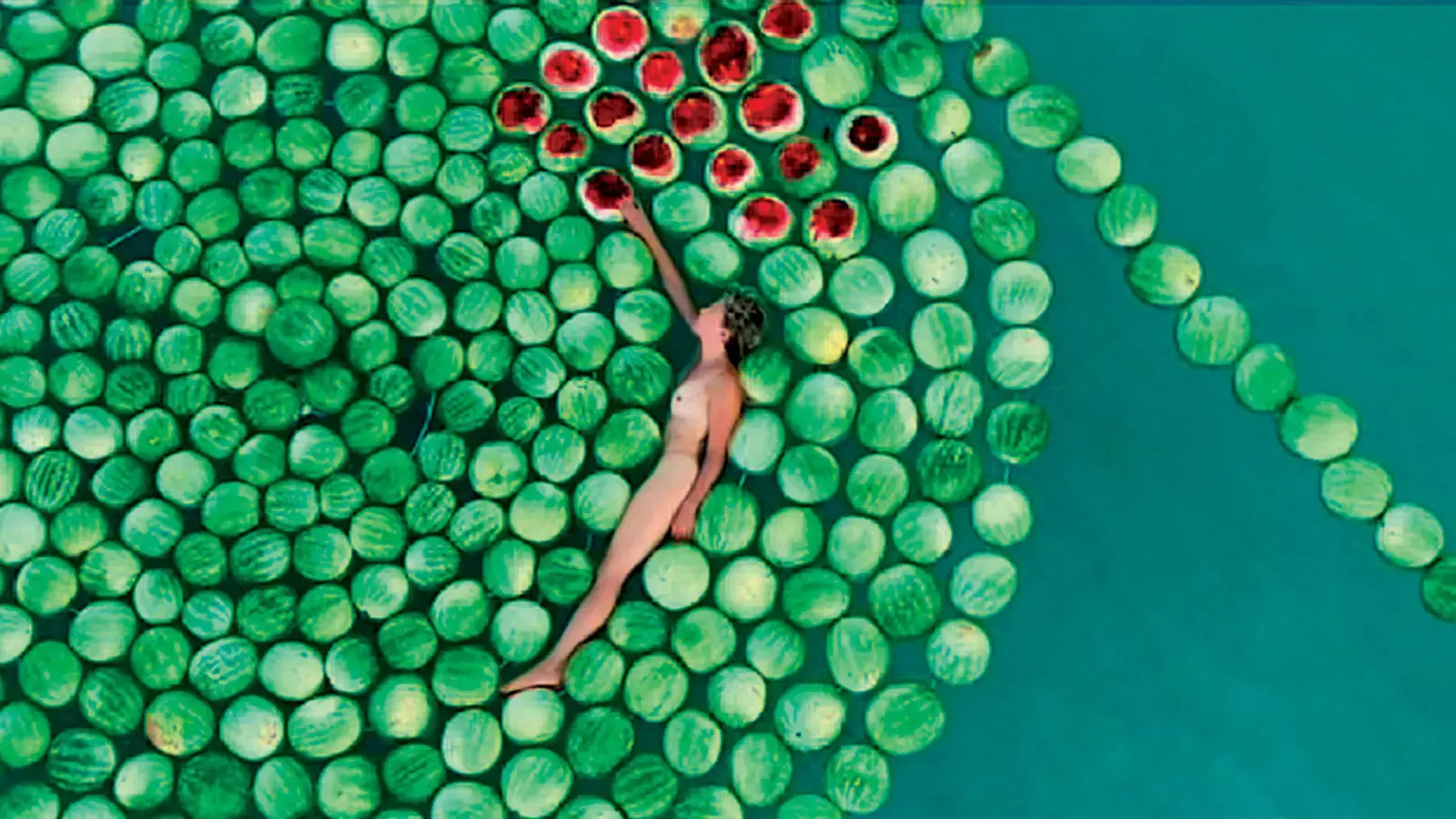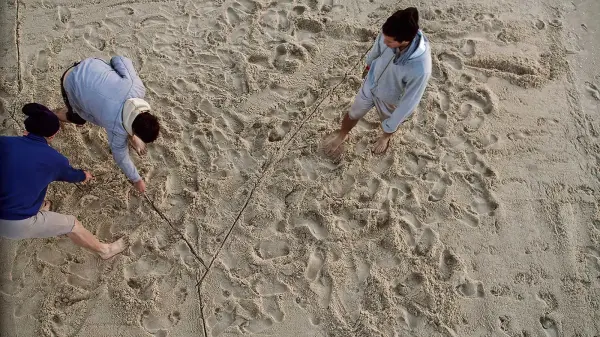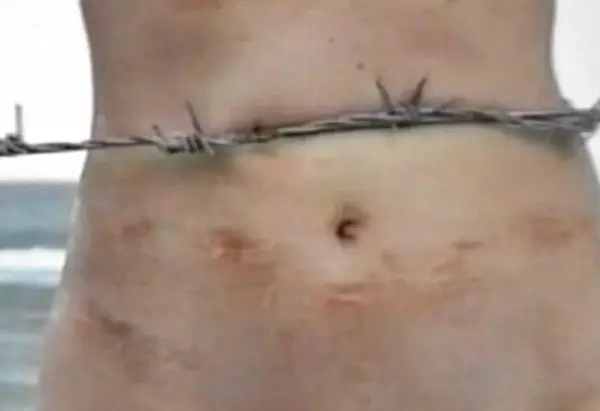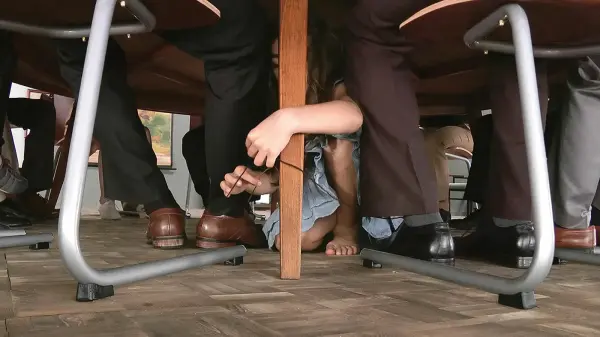Moving to Stand Still
Internationally acclaimed artist Sigalit Landau creates powerful works that investigate the complex realities of her native country, Israel.
As part of a significant international tour with presentations in Moscow, Budapest, Tromso and now Toronto, this exhibition brings a selection of Landau’s major video works to be shown for the first time in Canada. Two fundamental notions are central to Landau’s videos: the endless movement in search of a place of belonging and the indelible wound of a traumatic history as well as a disputed present.
At the core of this body of work is one of Landau’s first video performances, Barbed Hula (2000). Spinning a barbed wire hoop around her bare waist, the artist is caught in a continuous, looped movement. While constantly pushing against the defined limit, her body creates space for itself within the wounding border.
In Day Done (2007), Landau references a diasporic custom meant to remember the biblical destruction of the Temple in Jerusalem. Traditionally, the eastern wall of a newly built house would be left unfinished in memory of the devastation of the Temple and the exile of the Jewish people. Landau’s camera focuses on the eastern façade of a dilapidated house in South Tel Aviv. A black circle around the window casement creates an ambivalent illusion of a wound or target.
The site and crystallizing properties of the Dead Sea also recur throughout Landau’s works, both as material and subject of investigation. DeadSee (2005) confronts the ecological consequences of massive agricultural exploitation that leaves both nature and humanity vulnerable in its wake. Salted Lake (2011) takes the viewer as witness as a pair of shoes encased in crystalized Dead Sea salt slowly melts the frozen surface of a lake in Poland, one of the most charged sites in the memory of Jewish trauma.
Azkelon (2011) turns the individual struggle into interactive exchange through a children’s game of borders on the beach. Gaza, populated mostly by Palestinian refugees, and Ashkelon, established by Jewish immigrants from Arab countries, are separated by a border on that beach. The youths in the video belong to both sides and manage to create, through play, a safe place of communication, rendering meaningless the lines drawn in the sand.
While adults discuss potentially serious implications above, a young girl plays a private game underneath a negotiation table in Laces (2011). Tying the participants’ shoelaces together into a circle, she articulates a hopeful call to overcome the perceived impossibility of connection. But the child’s game is undone by the adults’ decision to extricate themselves and move away, leaving the shoes behind. The child holds the solution, but not the power to enact it.
Each one of Landau’s video performances contains the offering of a moment of transcendence, the pivotal moment of choice towards an imaginable resolution. Though set up as repeating loops where action endlessly begins and fails in an ostensibly inescapable cycle, the works imply that the solution lies inside the boundaries, not in a breakout. The repetitive, confined movement becomes akin to stillness, summoning transformation from within.








